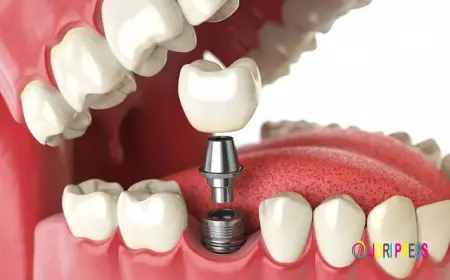Allis Clamp Surgical Instrument: A Versatile Tool for Precision in Medicine
The Allis clamp is a vital component in the arsenal of surgical instruments, prized for its exceptional utility in both general and specialised medical procedures. Known for its unique design and precise application, the Allis clamp is a surgical tool that enhances a surgeon's ability to handle delicate tissues effectively.

What is an Allis Clamp?
The Allis clamp is a surgical instrument that falls under the category of tissue forceps. Designed with a scissor-like appearance, it features serrated jaws and a locking mechanism, making it ideal for grasping and holding tissues securely during a procedure. Unlike other clamps, the teeth in an Allis clamp are strategically designed to hold onto tissues without causing excessive trauma.
This instrument is made of stainless steel, ensuring sterilisation and durability across repeated uses. Its ergonomic design allows surgeons to maintain a firm yet controlled grip, which is crucial in high-stakes surgical environments. The Allis clamp’s size varies, enabling use in procedures ranging from minor operations to complex surgeries.
Key Features of the Allis Clamp
The Allis clamp is distinguished by several features that make it indispensable in surgical settings. Its slender yet rigid body allows surgeons to operate it with minimal effort, offering precise control even in confined spaces. The clamp’s serrated teeth are crafted to provide a secure grip on tissues while minimising slippage and tissue injuries. This makes it particularly useful for handling tissues that require delicate manipulation, such as organs, fascia, and soft tissues.
Another significant feature is the locking mechanism, which enables the surgeon to apply a steady amount of pressure and keep the clamp in place without continuously holding it. Its ability to remain locked in a stable position ensures efficiency and precision. This functionality makes it a truly versatile tool that can play multiple roles across a range of procedures.
Common Surgical Applications
The Allis clamp is widely used across various fields of medicine, from general surgery to obstetrics and dentistry. Its versatility allows it to be adapted for multiple purposes, making it a staple in operating rooms around the world.
General Surgery
In general surgical procedures, the Allis clamp is often employed for grasping and holding tissues while incisions or sutures are made. Whether lifting soft tissues or retracting them to improve visualisation of the surgical site, this instrument provides the control required to perform the task with utmost precision.
Gastrointestinal Procedures
The Allis clamp is prominently used in gastrointestinal surgeries to manage tissue sections such as those within the stomach, intestines, or other parts of the digestive tract. Its specialised teeth make it ideal for gripping delicate tissues without the risk of perforation or unnecessary trauma.
Obstetrics and Gynaecology
Within the realm of obstetrics and gynaecology, the Allis clamp plays a critical role during procedures like caesarean sections or hysterectomies. It is particularly beneficial in holding the edges of tissues or handling uterine or vaginal walls when making repairs or adjustments.
Dentistry and Minor Procedures
Beyond major operations, the Allis clamp is also exceedingly useful in smaller-scale procedures, such as those in dentistry or dermatology. Dental surgeons often use it to stabilise oral tissues, while dermatologists may utilise it for its precision during minor skin surgeries.
Why the Allis Clamp Stands Out in Surgical Practice
The Allis clamp has garnered a reputation for being one of the simplest yet most reliable surgical instruments. Its combination of precision, durability, and adaptability ensures that it meets the demanding requirements of modern medical practices.
The instrument’s ability to handle tissues delicately while minimising trauma aligns well with contemporary surgical standards that prioritise minimised patient recovery time and reduced complications. Furthermore, the tool’s relatively simple maintenance requirements, including sterilisation and periodic inspections for wear, make it a cost-effective addition to any medical facility’s inventory.
Final Thoughts
The Allis clamp is not merely a surgical tool—it is a lifeline for precision in modern medicine. Its thoughtful design and broad range of applications have solidified its status as an indispensable instrument across multiple medical fields. Whether assisting in large-scale surgeries or supporting minor procedures, the Allis clamp enables surgeons to perform with greater confidence and control.
By minimising tissue trauma while maximising efficiency, this instrument exemplifies the intersection of innovation and practicality in surgical tools. For medical professionals, the Allis clamp represents a standard of excellence that continues to elevate the art and science of surgery.
What's Your Reaction?
 Like
0
Like
0
 Dislike
0
Dislike
0
 Love
0
Love
0
 Funny
0
Funny
0
 Angry
0
Angry
0
 Sad
0
Sad
0
 Wow
0
Wow
0

















































